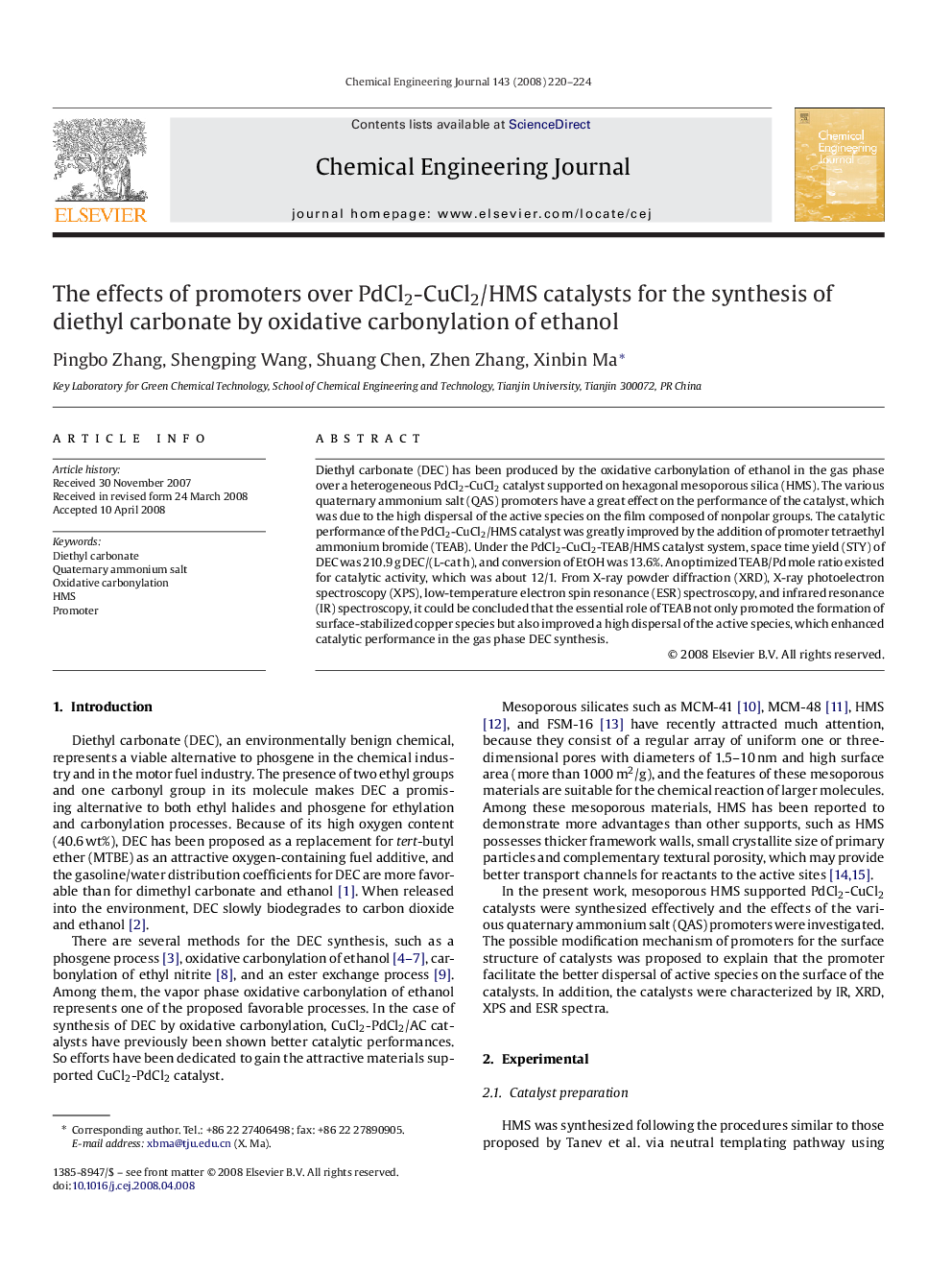| Article ID | Journal | Published Year | Pages | File Type |
|---|---|---|---|---|
| 152924 | Chemical Engineering Journal | 2008 | 5 Pages |
Diethyl carbonate (DEC) has been produced by the oxidative carbonylation of ethanol in the gas phase over a heterogeneous PdCl2-CuCl2 catalyst supported on hexagonal mesoporous silica (HMS). The various quaternary ammonium salt (QAS) promoters have a great effect on the performance of the catalyst, which was due to the high dispersal of the active species on the film composed of nonpolar groups. The catalytic performance of the PdCl2-CuCl2/HMS catalyst was greatly improved by the addition of promoter tetraethyl ammonium bromide (TEAB). Under the PdCl2-CuCl2-TEAB/HMS catalyst system, space time yield (STY) of DEC was 210.9 g DEC/(L-cat h), and conversion of EtOH was 13.6%. An optimized TEAB/Pd mole ratio existed for catalytic activity, which was about 12/1. From X-ray powder diffraction (XRD), X-ray photoelectron spectroscopy (XPS), low-temperature electron spin resonance (ESR) spectroscopy, and infrared resonance (IR) spectroscopy, it could be concluded that the essential role of TEAB not only promoted the formation of surface-stabilized copper species but also improved a high dispersal of the active species, which enhanced catalytic performance in the gas phase DEC synthesis.
